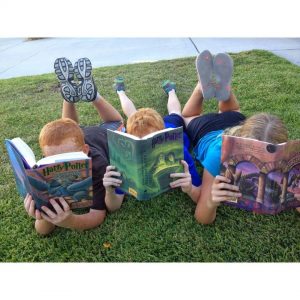Indeed, the “Classical” homeschool approach has existed since the Middle Ages and has produced some of the greatest minds in history. In fact, the goal of the classical homeschool technique is to teach people how to learn for themselves. In addition it follows, The five tools of learning, also known as the Trivium, are Reason, Record, Research, Relate and Rhetoric. First, younger children begin with the preparing stage. So they learn the three R’s. Then grammar stage is next and emphasizes compositions and collections. And then the dialectic stage. At its core this is where serious reading, study, and research take place.
Finally, all the tools come together in the Rhetoric stage where communication is the primary focus. Along with this, for help, homeschoolers following the classical homeschool technique will read books about this method, and find websites about classical homeschooling. They also may possibly join a classical homeschooling support group.
Additionally, Classical homeschoolers have a unique way of creating “History Notebooks.” These notebooks are especially very popular with Eclectic homeschoolers too. In fact, many Eclectic homeschoolers will borrow this way of teaching history and will add it to their own Eclectic curriculum. Certainly, the most popular book on the Classical approach is “The Well-Trained Mind: A Guide to Classical Education at Home” by Jessie Wise and Susan Wise Bauer.
Example of a Classical Homeschooling Schedule
First lets take a look at a general Classical Homeschool schedule so that you can get an idea of what a day looks like for Classical homeschoolers. Of course, this can be modified to meet the needs of your homeschooler and your homeschooling family.
- 5-6:30 a.m. Parents rise, children rise, showers, dressing, and early morning chores.

- 7:00 a.m. Breakfast, morning family meeting or worship.
- 8:00 a.m. Daily chores from a pre-determined list.
- 8:30-9:30 a.m. General lessons where children:
-
- 1) recite memory work
- 2) practice reading
- 3) practice oral narration
-
- 9:30-10:15 a.m. Mother reads aloud to all the children (child’s choice)
- 10:15-11:30 a.m.
- 1) phonics instruction
- 2) copy work (the student will copy verbatim a written piece, like the Constitution, that is at their level).
- 3) history notebook and timeline (For the timeline the children keep a running timeline where they can note names of people and events that they are currently studying. The history notebook is laid out by date and children add information from their copy work, photos from their field trip to the Civil War re-enactment, or their entry into the National History Day Competition.
- 11:30 a.m. Prepare lunch and straighten the house.
- 12:00 noon Lunch and mid-day chores.
- 1:00 p.m. Naps and quiet time.
- 2-2:45 p.m. Mother reads aloud (As well, children may do arts & crafts at the same time). Also, children finish up their oral narrations.
- 2:45-4:30 p.m. Finish up academic work from the morning, playtime, walks, field trips, library, and volunteering.
- 4:40-5:00 p.m. Prepare supper and straighten house.
- 5:00 p.m. Supper and evening chores.
- 6:30 p.m. Evening family worship (optional).
- 7-7:45 p.m. Father reads aloud to the family.
- 7:45-8:30 Family activities (like games).
- 8:30-9:00 p.m. Prepare for bed and the next day.
- 9:00 p.m. Finally bedtime
Podcasts About Homeschooling Methods
Want more information about homeschooling styles and methods. Further your research with our podcasts about homeschooling methods and more below.
Montessori Method and Other Similar Methods
School-at-Home, Multiple Intelligences, and the Classical Method
Unschooling, Charlotte Mason, Waldorf, and the Eclectic Method
Click here for additional great Classical Homeschool Resources.
Back to the Homeschooling Approaches Page




